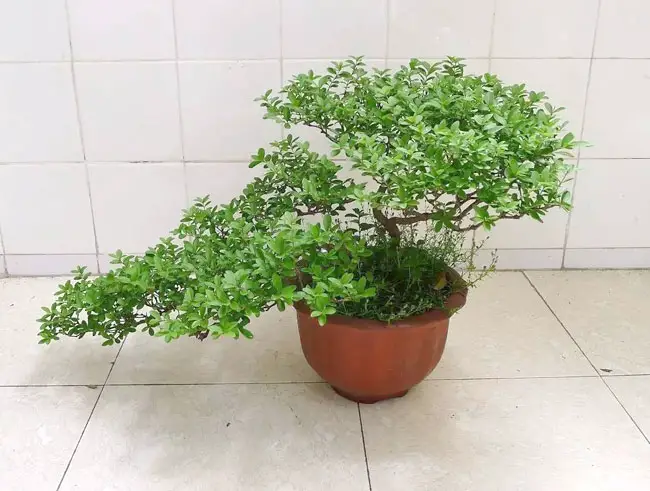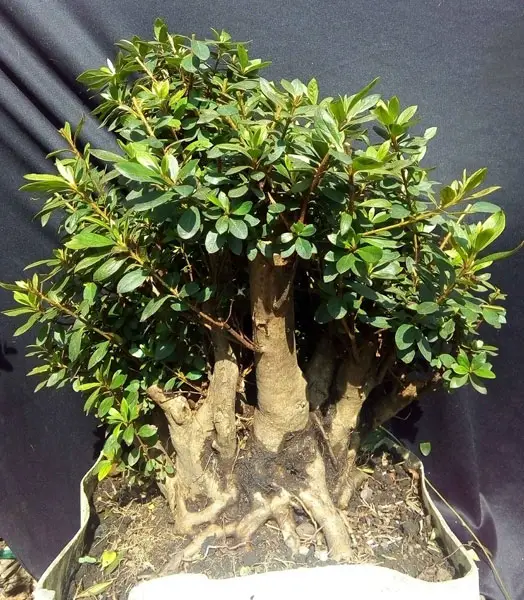Ligustrum bonsai is also known as privet bonsai. It is excellent for beginners in bonsai cultivation because growing it is simple and undemanding. Aside from that, ligustrum bonsai also bears beautiful white flowers during the late part of spring and early summer.
They also produce glossy leaves that have various shapes and different colors for every ligustrum bonsai tree species. It is a strong type of tree because it can tolerate heavy pruning.
Growing a ligustrum bonsai is a good hobby for everyone. You can grow them and give them as gifts to close friends and people on special occasions. Here are some important facts you have to know about growing a ligustrum bonsai:
1. You can start growing a ligustrum bonsai from cuttings, grafting, air-layering, and from seeds. But be sure that you do the procedures properly in gathering a cutting or graft to make sure that they are viable to grow your bonsai well.
You can take semi-ripe cuttings during the summer, and you should gather hardwood cuttings during the winter. If you are planning to grow bonsai through air-layering, be sure that you do it during the late part of spring. However, if you are planning to grow from seedlings, make sure you allow the ligustrum seeds to undergo the germination process.
Germination has two types, which are forced germination and natural germination. You can choose what process you will use in the germination of ligustrum seeds. You have to sow them outside during spring or fall.
2. You can place your ligustrum bonsai under full sun or shade. It can grow well under direct sunlight but be sure that you must not expose it to direct afternoon sunlight because this can cause the burning of its leaves. During the afternoon, you can place your miniature under a shady area so that you can protect it from intense sun rays.
Morning sunlight is best for them because it is not that harsh during this time, which will help your bonsai grow healthily.
3. Give just enough water to your ligustrum bonsai to prevent drying up and avoid the possibility of developing dehydration. You should never give too much water because it cannot tolerate soaking in water for a longer period of time, especially if your bonsai container has a saucer beneath it. Overwatering is bad for your miniature tree as it can cause the rotting of its root system, which can lead to the weakness of your bonsai.
4. Feed your miniature tree with a general-purpose fertilizer. This should be given once every two weeks during spring to supply essential nutrients when your bonsai grows at a faster rate. If you are growing ligustrum bonsai indoors, you must feed it every month during the winter season.
5. You have to use soil with good drainage and can retain proper amounts of moisture to supply your miniature tree. Excess amounts of water must be drained out from the bonsai pot so that you will prevent water congestion as this can weaken your bonsai.
6. Choose a bonsai pot that has appropriate drainage holes beneath it, just enough to drain out excess amounts of water. You can also use a tray or saucer under your bonsai pot, but make sure that you throw away the water in it because it can also cause browning of the root system.
7. Repotting your ligustrum bonsai is essential to prevent the possibility of pot bound. You should repot it yearly during the springtime. You also have to assess the need for repotting; you can do it by checking the bonsai’s root system so that you can transfer it immediately to a new and spacious pot before anything bad happens to your little tree.
How To Care For A Ligustrum Bonsai
Many bonsai lovers favor the Ligustrum bonsai as their favorite. It is a type of evergreen shrub with glossy, dark-green leaves and summer-blooming little white flowers. Although it calls for persistence and commitment, taking care of this unusual plant may be very gratifying.
When come to the part of taking care of your Ligustrum bonsai, you should choose a soil mixture that can well adapt to the environment and has good drainage. For the soil mixture, the ideal one would be a mixture of peat moss, sand, and perlite.
The most crucial thing you shouldn’t forget to do is to provide the Ligustrum bonsai enough light. Although direct sunshine is not required, the plant should still have access to indirect light. It should ideally be situated where there is at least four hours of good light each day.
Another crucial aspect of maintaining your Ligustrum Bonsai is watering. Never let your bonsai’s soil get entirely dry; water it as soon as it feels somewhat dry to the touch. Being careful with how much water you provide your tree is vital to prevent root rot.
To support appropriate growth and development, the soil must be continually hydrated. To achieve this, water the soil thoroughly at least once a week, making sure that no standing water gathers on the soil’s surface.
Another crucial component of maintaining your Ligustrum Bonsai is fertilizing. Use a fertilizer that is balanced and has all the nutrients your tree needs to grow and thrive.
Pruning Ligustrum Bonsai
Pruning is an essential part of caring for a Ligustrum bonsai. This process helps to keep the plant healthy, promote new growth, and maintain its desired shape. It is advisable for you to prune your bonsai more often. Ideally, you should prune them every two or three months during spring and summer. With proper technique, the process can be quite straightforward.
When pruning a Ligustrum bonsai, getting the right tool is rather important. You need to use shears or sharp scissors to carry out the pruning job. This is to avoid damaging the branches. Start by removing any dead or stray branches as well as any foliage that may be growing in an undesired direction. Take care not to remove too much at once as this could cause stress to the plant and potentially stunt its growth. Instead, take small cuts over time until you have achieved the desired shape.
For the pruning sessions, the ideal times would be late winter and early spring as they allow sufficient time for the new growth before summer arrives. With consistent maintenance and attention, your Ligustrum bonsai will remain healthy and beautiful for years to come.


